How to use Microsoft account, OneDrive on Word 2013
- Instructions on how to create frames in Word 2007, 2010, 2013, 2016
- How to install Vietnamese for Microsoft Office 2013 suite
- Hide the Ribbon toolbar in Word 2013
Many new features in Office 2013 aim to backup and share files online. To use these features, you need to have a free Microsoft account ( Microsoft Account , formerly known as Windows Live ID ) if not already available. You can then log in to your Microsoft account to access OneDrive , which is an online storage space for other documents and files.
 How to use Microsoft account, OneDrive on Word 2013 Picture 1
How to use Microsoft account, OneDrive on Word 2013 Picture 1
OneDrive was formerly called SkyDrive . There is basically no difference in the way OneDrive works - it's just a new name that is set for an existing service. In the next few months, you can still see SkyDrive in some Microsoft products.
Benefits of using Microsoft accounts
Here are some things you can do with your Microsoft account:
- Access your files anywhere : You can save files to your OneDrive and access them from any computer with an Internet connection. This helps keep your files safe if something happens to the computer.
- Editing files in web browser : If you are using a computer without Microsoft Office, you can use Office Online ( formerly known as Office Web Apps ) to edit documents in the browser for free. Office Online includes simple versions of Word, Excel, PowerPoint and OneNote.
- Share files: It's easy to share files on your OneDrive with friends or colleagues. You can set permissions to edit documents or read only files. This option is suitable for collaborative work because many people can participate in editing documents at the same time (also known as co-authors ).
If you don't have a Microsoft account, you can refer to our fastest Microsoft Account Setup article.
Log in to Office 2013:
When using Office for the first time, it will ask you to log in to your Microsoft account. However, if you do not want to log in at that time, you can choose to log in later.
1. Pay attention to the upper right corner, click Sign in .
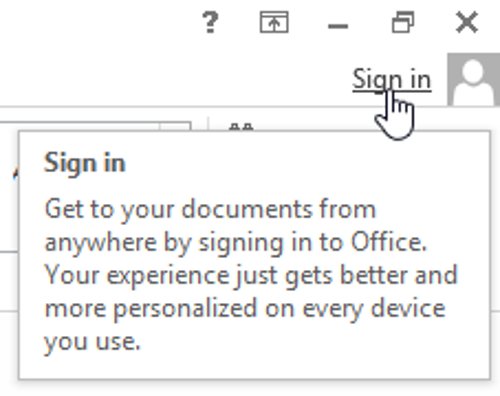 How to use Microsoft account, OneDrive on Word 2013 Picture 2
How to use Microsoft account, OneDrive on Word 2013 Picture 2
2. Enter your email address; then click Login .
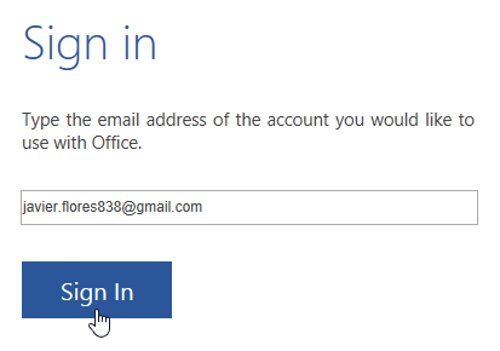 How to use Microsoft account, OneDrive on Word 2013 Picture 3
How to use Microsoft account, OneDrive on Word 2013 Picture 3
3. Click on the Enter password box.
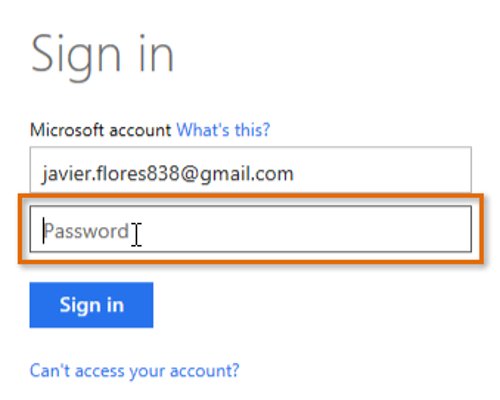 How to use Microsoft account, OneDrive on Word 2013 Picture 4
How to use Microsoft account, OneDrive on Word 2013 Picture 4
4. Enter the password and then click Login .
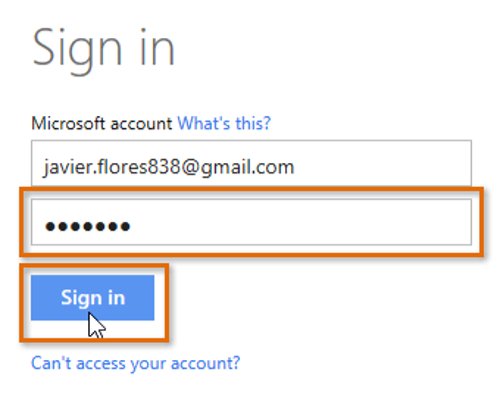 How to use Microsoft account, OneDrive on Word 2013 Picture 5
How to use Microsoft account, OneDrive on Word 2013 Picture 5
5. Your account name will now appear in the upper right corner.
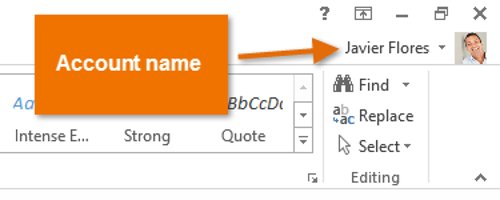 How to use Microsoft account, OneDrive on Word 2013 Picture 6
How to use Microsoft account, OneDrive on Word 2013 Picture 6
Log out of Office 2013
If you are using Office at home or at work, it will be more convenient to maintain the login status. However, if you are using the same computer ( for example, in a library or office service center ), be sure to log out immediately after completion. This will prevent others from accessing your OneDrive files.
1. Click on the File tab
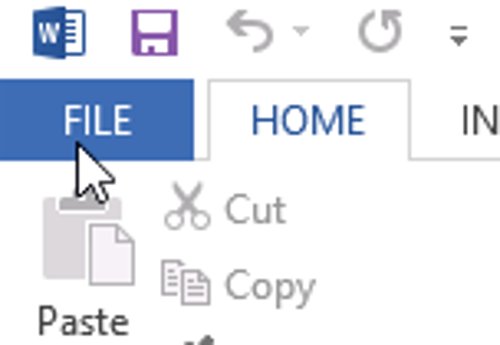 How to use Microsoft account, OneDrive on Word 2013 Picture 7
How to use Microsoft account, OneDrive on Word 2013 Picture 7
2. Click Account and then select Sign out .
 How to use Microsoft account, OneDrive on Word 2013 Picture 8
How to use Microsoft account, OneDrive on Word 2013 Picture 8
3. A warning message will appear. Click Yes to log out.
 How to use Microsoft account, OneDrive on Word 2013 Picture 9
How to use Microsoft account, OneDrive on Word 2013 Picture 9
If you are logged into Windows 8 with your Microsoft account, you will automatically log in to Office 2013 and will not allow you to log out of Office. Instead, you can log out of Windows 8 to prevent others from accessing your files.
Store data in the cloud with OneDrive
When you sign in to your Microsoft account, OneDrive will appear as an option whenever you save or open the file. You still have the option to save the file to your computer. However, saving files to OneDrive allows you to access them from any computer and you can also share files with friends or colleagues.
For example, when you click Save As , you can choose OneDrive or the computer to save.
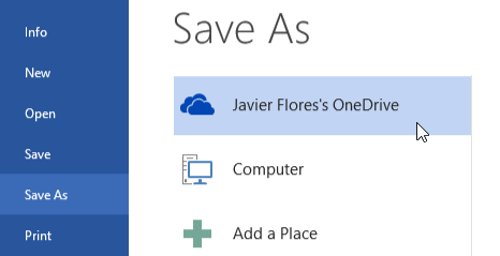 How to use Microsoft account, OneDrive on Word 2013 Picture 10
How to use Microsoft account, OneDrive on Word 2013 Picture 10
Upload existing files securely
You may already have documents on your computer, for example, in your Documents library or on a desktop computer. If you decide to upload them to OneDrive , it's important to understand that you're uploading a copy of each file. To avoid problems that occur, you should only edit the version on OneDrive. If you still have a copy of the file on your computer ( in the Documents library, for example ), you can delete that copy or keep it as a backup.
Another solution is to download the Microsoft OneDrive application . The application creates a folder on your computer and still syncs with your OneDrive. Then, just move your document to that folder to upload them to OneDrive. Since then the files will synchronize, you can open them from the folder, or from your OneDrive.
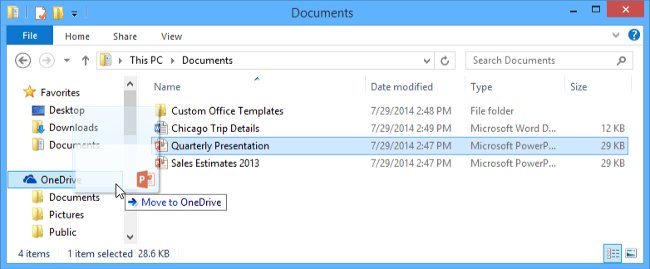 How to use Microsoft account, OneDrive on Word 2013 Picture 11
How to use Microsoft account, OneDrive on Word 2013 Picture 11
Share and collaborate with OneDrive
Office 2013 allows you to share documents , spreadsheets ( computer spreadsheets ) and presentations ( presentation ). Once you have saved the file to OneDrive, you can invite people to read or edit it. People you share don't need Office 2013; They can read or make simple edits with Office Online.
Collaborate in Office
For some projects, you may need more than one person to edit a document . When you share documents with OneDrive, many people can edit them at once. This is called co-authoring . Co-authors can be used with Word and PowerPoint, but not yet with Excel. Each person will need to use Office 2013 or Office Online.
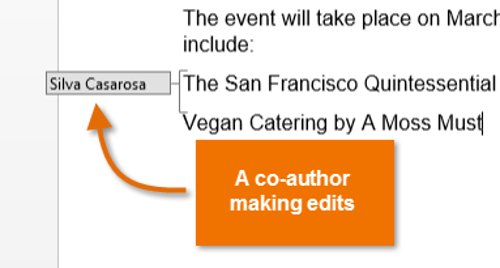 How to use Microsoft account, OneDrive on Word 2013 Picture 12
How to use Microsoft account, OneDrive on Word 2013 Picture 12
If many people edit a document, you will see an icon at the bottom of the screen showing how many people are editing it. In addition, you can view their name by clicking on the icon.
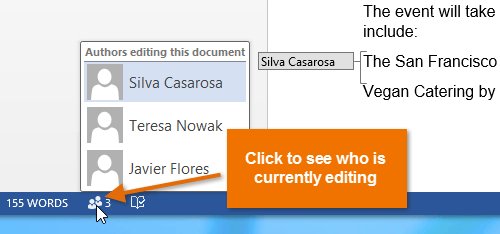 How to use Microsoft account, OneDrive on Word 2013 Picture 13
How to use Microsoft account, OneDrive on Word 2013 Picture 13
Co-authors work a little differently in every Office program. For example, in Word 2013, you won't see everyone's changes in documents when they do. Instead, every time you save the document, it will update to show everyone's changes. In addition, co-authors do not work in Excel 2013, but it will work if everyone is using Excel in Office Online.
See also: Word 2013 Complete Guide (Part 1): Basic tasks in Word
Having fun!
You should read it
- Basic tasks in Word 2013
- Word 2013 Complete Guide (Part 10): Bullets, Numbering, Multilevel list in Microsoft Word
- Create a new Word file, open the file in Word 2013
- The text editing operations on Word 2013 are basic
- Align text, adjust font in Word 2013
- Word 2013 Complete Guide (Part 8): Using Indents and Tabs
- Word 2013 Complete Guide (Part 3): How to store and share documents
- Word 2013 Complete Guide (Part 16): Image format
- Word 2013 Complete Guide (Part 6): Aligning page layout
- Word 2013 Complete Guide (Part 7): Text printing operations
- Word 2013 Complete Guide (Part 11): How to create hyperlink links
- Word 2013 Complete Guide (Part 15): Insert Images and Text Wrapping functions






 Dropbox users who switch to OneDrive get 100GB
Dropbox users who switch to OneDrive get 100GB Instructions for using OneDrive on iOS devices
Instructions for using OneDrive on iOS devices Just because of ransomware, OneDrive adds Files Restore feature to recover all data
Just because of ransomware, OneDrive adds Files Restore feature to recover all data Create referral links in OneDrive to increase storage space
Create referral links in OneDrive to increase storage space 8 super useful things you can do with Microsoft OneDrive on Android
8 super useful things you can do with Microsoft OneDrive on Android How to sync Microsoft OneDrive with Linux
How to sync Microsoft OneDrive with Linux